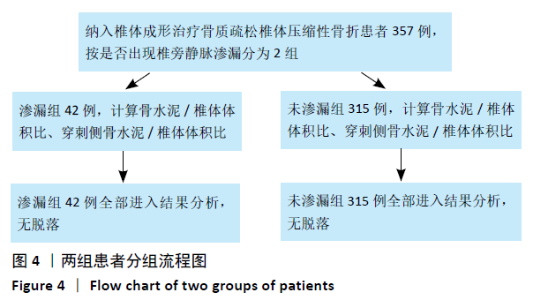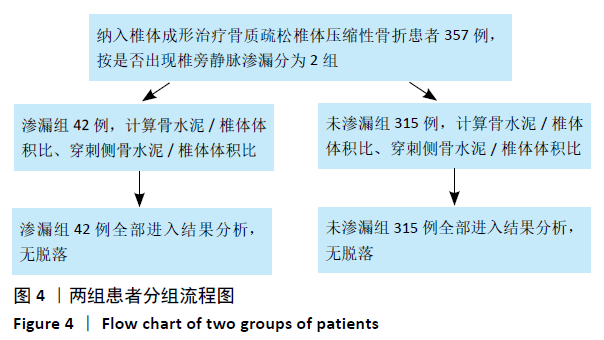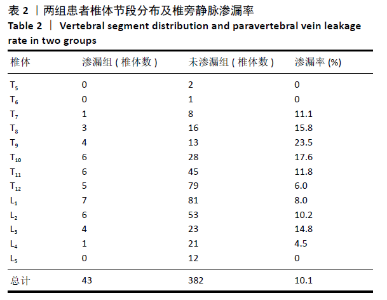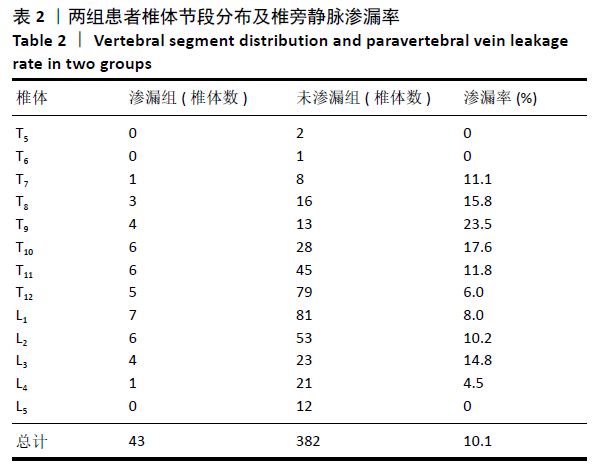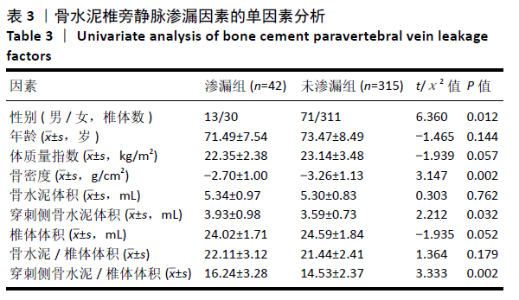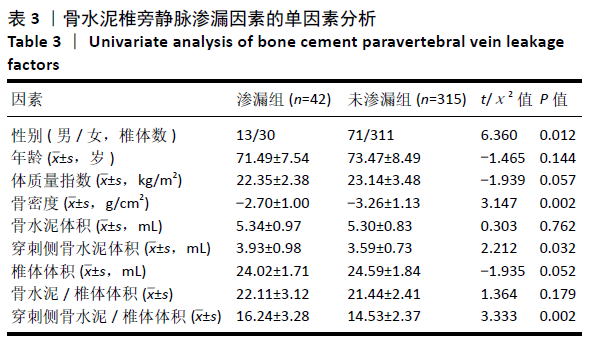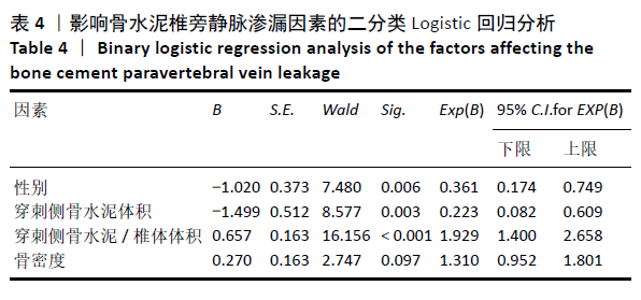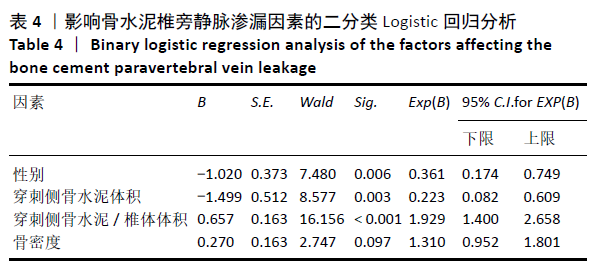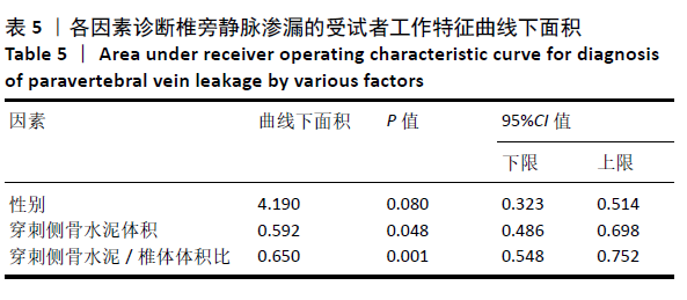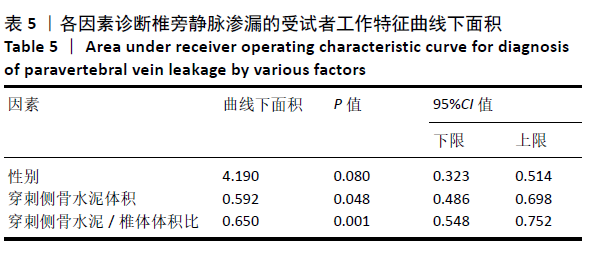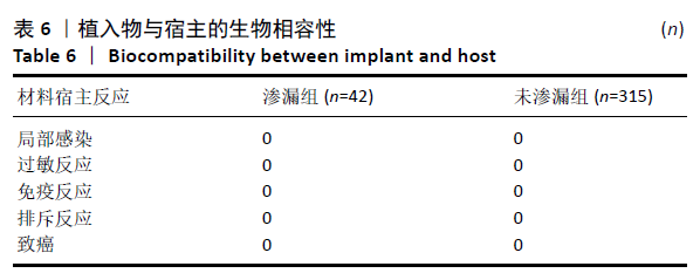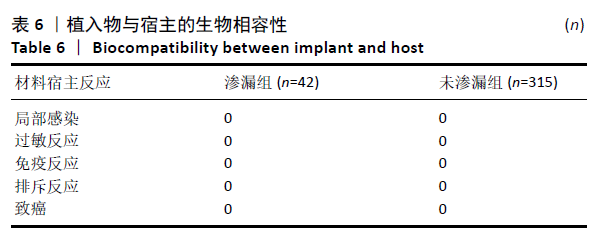[1] HULME PA, KREBS J, FERGUSON SJ, et al. Vertebroplasty and kyphoplasty: a systematic review of 69 clinical studies. Spine (Phila Pa 1976). 2006;31(17):1983-2001.
[2] 马春明,鞠晓华,王孝文,等. 腰椎椎基静脉孔的解剖学观测及其临床意义[J]. 中国临床解剖学杂志,2014,32(4):405-408.
[3] IWANAGA J, RUSTAGI T, ISHAK B, et al. Venous Drainage of Lumbar Vertebral Bodies: Anatomic Study with Application to Kyphoplasty, Vertebroplasty, and Pedicle Screw Complications. World Neurosurg. 2020;137:e286-e290.
[4] CHOE DH, MAROM EM, AHRAR K, et al. Pulmonary embolism of polymethyl methacrylate during percutaneous vertebroplasty and kyphoplasty. AJR Am J Roentgenol. 2004;183(4):1097-1102.
[5] 姚晓光,申勇,张英泽,等. 经皮椎体成形术中骨水泥填充对患者凝血功能的影响[J]. 中国脊柱脊髓杂志,2008,18(11):842-845.
[6] YOO KY, JEONG SW, YOON W, et al. Acute respiratory distress syndrome associated with pulmonary cement embolism following percutaneous vertebroplasty with polymethylmethacrylate. Spine (Phila Pa 1976). 2004;29(14):E294-E297.
[7] KONG M, XU X, SHEN J, et al. Clinical characteristics and management of cardiac and/or pulmonary cement embolus after percutaneous vertebroplasty: a single center experience. Ann Transl Med. 2019; 7(16):372.
[8] KIM YJ, LEE JW, PARK KW, et al. Pulmonary cement embolism after percutaneous vertebroplasty in osteoporotic vertebral compression fractures: incidence, characteristics, and risk factors. Radiology. 2009; 251(1):250-259.
[9] LEITMAN D, YU V, COX C. Investigation of polymethylmethacrylate pulmonary embolus in a patient ten years following vertebroplasty. J Radiol Case Rep. 2011;5(10):14-21.
[10] 王诗军,邑晓东,李淳德,等. 经皮椎体成形中椎旁血管渗漏与骨水泥性肺栓塞[J]. 中国组织工程研究,2013,17(47):8275-8281.
[11] HSIEH MK, KAO FC, CHIU PY, et al. Risk factors of neurological deficit and pulmonary cement embolism after percutaneous vertebroplasty. J Orthop Surg Res. 2019;14(1):406.
[12] XIE W, JIN D, MA H, et al. Cement Leakage in Percutaneous Vertebral Augmentation for Osteoporotic Vertebral Compression Fractures: Analysis of Risk Factors. Clin Spine Surg. 2016;29(4):E171-E176.
[13] HEINI PF, BERLEMANN U, KAUFMANN M, et al. Augmentation of mechanical properties in osteoporotic vertebral bones--a biomechanical investigation of vertebroplasty efficacy with different bone cements. Eur Spine J. 2001;10(2):164-171.
[14] AEBLI N, KREBS J, SCHWENKE D, et al. Pressurization of vertebral bodies during vertebroplasty causes cardiovascular complications: an experimental study in sheep. Spine (Phila Pa 1976). 2003;28(14): 1513-1519, 1519-1520.
[15] 米忠友. 经皮椎体成形术推注压力与心肺并发症的关系研究[D]. 重庆:重庆医科大学,2005.
[16] LIU J, LIU Z, LUO J, et al. Influence of vertebral bone mineral density on total dispersion volume of bone cement in vertebroplasty. Medicine (Baltimore). 2019;98(12):e14941.
[17] ZHU SY, ZHONG ZM, WU Q, et al. Risk factors for bone cement leakage in percutaneous vertebroplasty: a retrospective study of four hundred and eighty five patients. Int Orthop. 2016;40(6):1205-1210.
[18] TRUMM CG, PAHL A, HELMBERGER TK, et al. CT fluoroscopy-guided percutaneous vertebroplasty in spinal malignancy: technical results, PMMA leakages, and complications in 202 patients. Skeletal Radiol. 2012;41(11):1391-1400.
[19] ZHAN Y, JIANG J, LIAO H, et al. Risk Factors for Cement Leakage After Vertebroplasty or Kyphoplasty: A Meta-Analysis of Published Evidence. World Neurosurg. 2017;101:633-642.
[20] FU Z, HU X, WU Y, et al. Is There a Dose-Response Relationship of Cement Volume With Cement Leakage and Pain Relief After Vertebroplasty? Dose Response. 2016;14(4):714835597.
[21] JIN YJ, YOON SH, PARK KW, et al. The volumetric analysis of cement in vertebroplasty: relationship with clinical outcome and complications. Spine (Phila Pa 1976). 2011;36(12):E761-E772.
[22] KWON HM, LEE SP, BAEK JW, et al. Appropriate Cement Volume in Vertebroplasty: A Multivariate Analysis with Short-Term Follow-Up. Korean J Neurotrauma. 2016;12(2):128-134.
[23] SUN H, JING X, LIU Y, et al. The Optimal Volume Fraction in Percutaneous Vertebroplasty Evaluated by Pain Relief, Cement Dispersion, and Cement Leakage: A Prospective Cohort Study of 130 Patients with Painful Osteoporotic Vertebral Compression Fracture in the Thoracolumbar Vertebra. World Neurosurg. 2018;114:e677-e688. |
